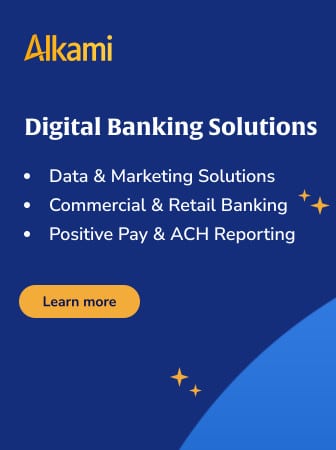The report: The Ultimate Guide to Product Innovation in Banking [December 2023]
Source: Accenture
Why we picked it: The pace of innovation seems poised to only accelerate in 2024 and we wanted to understand how banks can keep pace.
Executive Summary
To remain competitive and relevant, banks must create products and services that both solve their customers’ challenges and meaningfully differentiate their offerings from competitors’.
Over the past decade, however, two forces have distorted this imperative: Greater reliance on digital channels has created functional equivalence among many banks’ offerings. Meanwhile, near-zero interest rates encouraged banks to focus on optimizing and marketing individual products rather than developing integrated propositions for whole customers.
Rising rates are now exposing the limits of the product-centric approach and are finally pulling business strategy and product strategy back together. With access to low-beta deposits and legacy infrastructures, banks can take advantage of this environment to drive innovation. They now have the opportunity and restored profitability to prioritize product innovation and fuel growth in the era of shifting consumer preferences.
Key Takeaways
- Over the past decade, banks have taken a backseat to fintechs in regard to product innovation.
- Banks can now deliver growth by unbundling their legacy tech and product distribution and rebundling with partners at lower costs and faster times to market.
- Fintechs are facing pullbacks in investor funding and falling valuations. Banks have a once-in-a-generation opportunity to scoop up new customers, innovative technology and desirable talent.
What we liked: Accenture identifies dozens of great niche products and examples across eight categories that could help banking readers spark their ideas.
What we didn’t: The report is sometimes hard to follow, especially in a section about innovative ideas that banks should explore. The information, delivered in a series of questions and answers, could have been presented more clearly as statements.
Things that made us go “hmmm”: The report highlights an annual innovation awards program offered by Accenture and its partner, Qorus, a Paris-based financial leadership community, which can make it seem that Accenture is talking up its own book. And the winners from last year’s program often embody the very kind of tactical, product-centric innovation that Accenture pooh-poohs in this report.

The unfair advantage for financial brands.
Offering aggressive financial marketing strategies custom-built for leaders looking to redefine industry norms and establish market dominance.

Why Industry Cloud for Banking?
PwC’s Industry Cloud for Banking helps deliver personalized products and services that today’s customers expect.
The Back Story
In the decades before the Great Recession, banks relied on unrelenting product innovation to drive growth. Things like adjustable-rate mortgages, no-fee checking, debit cards and instant credit benefited both banks and customers. However, over the past two decades, banks shifted away from innovation and toward economic recovery, new regulatory standards and digital initiatives to reduce costs. In the last decade, digital banks and fintechs have driven most innovation over the past decade.
The role of 0% interest rates: A decade of 0% interest rates distorted the market by flooding it with cheap cash and alternative lenders. The changing equations led banks to focus on optimizing and marketing individual products rather than developing integrated propositions for customers. As a result, the role of banks relative to the overall financial system began to shrink.
“Banks are well positioned to take a proactive role as they face changing regulations, shifting consumer preferences and rising interest rates. Today, they must rediscover their creative mojo and innovate for today’s customers.”
During this time, the market saw an explosion of non-regulated players attacking the banking value chain and building new banking products without the constraint of regulations. Accenture notes four main directional changes that drove customers outside the banking industry over the past decade. This includes the rise in digital banks, the explosion of digital lending, the disaggregation of SMB products and the replacement of banks by private equity firms.
Need more SMB marketing and product insight? Check out all our SMB coverage.
Opportunities for banking product innovation in a rising rate environment: While banks now face rising interest rates, new regulations and macroeconomic volatility, they also have strong and diversified balance sheets and decades of experience managing change. Banks can offer holistic value propositions with end-to-end functionality, developing products that link deposits and lending and amplify value.
Innovative Product Ideas for Banks
Accenture identifies more than a half-dozen areas where banks can explore new ideas for product innovation:
Loyalty-as-a business: Loyalty is often taken for granted, and customers are increasingly willing to try brands that serve them better. Customers want to be rewarded for loyalty, not just on single products, but across the banks’ offerings. Accenture notes several examples where companies have deepened loyalty offerings to maintain relationships. This can include rewarding customers with complementary, automatic tax benefits, incentivizing them to pay off debts early or offering cash-back rewards at the point of sale.
De-commoditizing products: Rising rates are now creating a window of opportunity for banks to “de-commoditize” products by developing solutions like those of Amazon Prime that rewards total engagement with the bank. For example, banks may help students manage their money with a product that personalizes services or provide renters loans with pre-verification to help them get the homes they need. Another opportunity is to enable housemates or partners to integrate personal accounts with sharing expense tracking and reimbursement.
Dig deeper:
- Banking Loyalty is Falling. Here’s How to Reverse The Trend
- Could ‘Amazon One’ Palm Payments Get The Upper Hand Over Digital Wallets?
Democratization of advice: Some leading banks are now democratizing advice products and services historically provided only to wealthy investors, making advice accessible with analytics and digital tools that deliver more meaningful, contextual and personalized services. For example, tools like Max help customers optimize their savings rates by automatically moving money to products with the best rate. Meanwhile, Yendo, a mobile-based revolving credit product, enables individuals to collateralize against their personal assets.
Purpose-driven products and services: Accenture notes banks should focus on solutions that address the diverse needs of communities and consumers. Organizations that innovate to provide greater access to credit and capital can win a wider segment of consumers, especially those who are unbanked or underbanked. New “save now, buy later” programs also enable customers to enroll in a savings plan for specific retail purchases and then get cash back when they buy.

Longevity and legacy: The world is changing, and many now consider traditional retirement to be an antiquated concept. Accenture notes Boomers were the first to have new retirement needs with second careers and trends like “silver divorce.” Meanwhile, younger generations are also redefining financial success and looking at new concepts like FIRE (financial independence, retire early). As a result, banks must now shift to longer-term planning focused on health and wellness. Potential ideas include things like solutions that connect retired customers through a virtual community or could calculate a customer’s FIRE number with advice on how to improve it.
Reimagining commercial banking: With more economic uncertainty on the horizon, banks will have to get back to the basics, like process effectiveness and control, or ensuring the new LOS is adopted effectively. Yet banks must also be ready to build on the foundational work they have been doing and to deliver fully digital experiences. Some ideas could include serving as a financial intermediary between buyers and sellers of used equipment, dynamically adjusting pricing based on expected customer lifetime value and integrating financing into customers’ supply chains.
SMB made simple: Market innovation and embedded banking are changing how SMBs interact with banking products. For example, new value-added services and more convenient channels are making it easier for SMBs to access their banking services. There is growing pressure on banks to simplify the SMB banking experience with an ecosystem of solutions to help customers manage their businesses. For example, banks could create tailor-made debt solutions or business tools to help SMBs implement ESG initiatives. Or, they could develop an SMB super app or open physical locations to support small businesses.
Being better together: While banking is a fiercely competitive industry, there are many areas of the industry where banks perform better together. The advent of commercially-driven embedded banking, the movement towards loyalty and rewards and the growth of AML/KYC should give banks cause to think beyond their four walls and find new ways to collaborate. Banks could explore QR codes to empower bill payments or P2P payments, collaborate with a BNPL provider, or use third parties to expand the capabilities of their bank app.







